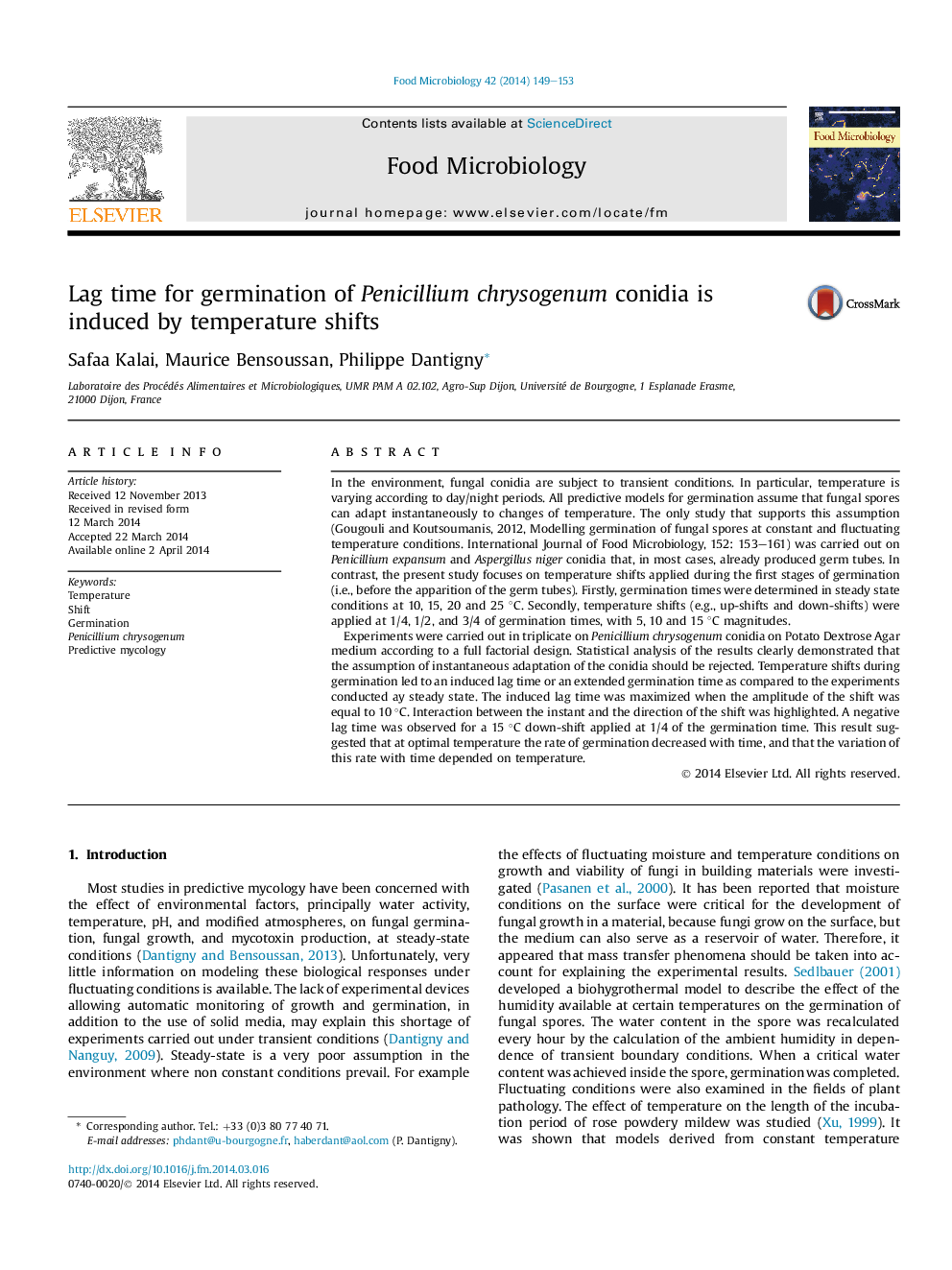| کد مقاله | کد نشریه | سال انتشار | مقاله انگلیسی | نسخه تمام متن |
|---|---|---|---|---|
| 4362896 | 1616257 | 2014 | 5 صفحه PDF | دانلود رایگان |

• Temperature shifts were applied to germinating conidia of Penicillium chrysogenum.
• Magnitude, direction, and instant of the shifts were tested.
• Induced lag times were observed in most cases.
• A negative lag time was shown for a 15 °C downshift, at 1/4 of the germination time.
• A non-linear profile of the germination rate at optimum temperature was suggested.
In the environment, fungal conidia are subject to transient conditions. In particular, temperature is varying according to day/night periods. All predictive models for germination assume that fungal spores can adapt instantaneously to changes of temperature. The only study that supports this assumption (Gougouli and Koutsoumanis, 2012, Modelling germination of fungal spores at constant and fluctuating temperature conditions. International Journal of Food Microbiology, 152: 153–161) was carried out on Penicillium expansum and Aspergillus niger conidia that, in most cases, already produced germ tubes. In contrast, the present study focuses on temperature shifts applied during the first stages of germination (i.e., before the apparition of the germ tubes). Firstly, germination times were determined in steady state conditions at 10, 15, 20 and 25 °C. Secondly, temperature shifts (e.g., up-shifts and down-shifts) were applied at 1/4, 1/2, and 3/4 of germination times, with 5, 10 and 15 °C magnitudes.Experiments were carried out in triplicate on Penicillium chrysogenum conidia on Potato Dextrose Agar medium according to a full factorial design. Statistical analysis of the results clearly demonstrated that the assumption of instantaneous adaptation of the conidia should be rejected. Temperature shifts during germination led to an induced lag time or an extended germination time as compared to the experiments conducted ay steady state. The induced lag time was maximized when the amplitude of the shift was equal to 10 °C. Interaction between the instant and the direction of the shift was highlighted. A negative lag time was observed for a 15 °C down-shift applied at 1/4 of the germination time. This result suggested that at optimal temperature the rate of germination decreased with time, and that the variation of this rate with time depended on temperature.
Journal: Food Microbiology - Volume 42, September 2014, Pages 149–153